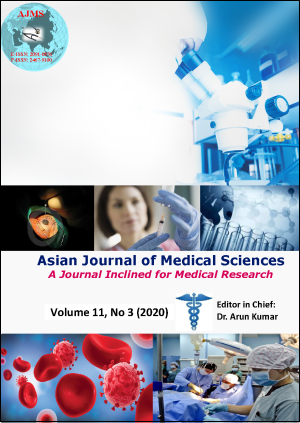COVID 19: An Epidemiological and Host Genetics Appraisal
Keywords:
SARS-CoV-2, genetic polymorphism, epidemiology, public health, genderAbstract
Coronaviruses (CoVs) is a single single-strand RNA genome approximately 26 - 32 kb in size. Out of the seven coronaviruses, three HCoVs (Human CoVs) have been discovered that causes severe pneumonia such as Severe Acute Respiratory Syndrome (SARS) and Middle East Respiratory Syndrome (MERS) and recently recognized SARS-CoV-2, which possesses varying degrees of lethality worldwide and happened to be bioterrorism in terms of the recent outbreak through human-to-human transmission from China to all over the world. Epidemiological and Clinical study on SARS-COV-2 have recently been reported world-wide but lack of data on prognosis factors including effective medicine or vaccine are yet to be clinically approved to prevent this infectious disease. Human pathogenic coronaviruses SARS-CoV-2 bind to their target cells through ACE2, which is expressed by epithelial cells of the lung, intestine, kidney, and blood vessels. The difference in distribution, maturation, and functioning of viral receptors could be considered as a possible reason for the genetic heterogeneity of ACE2, and age and sex related difference in the incidence of the disease such as, the positive correlation with ACE2 expression and age including the severity of the infection of SARS-CoV-2. Since the ACE2 location in X chromosome, therefore, the males presumable might have more morbidity and mortality by SARS-CoV-2 than females due to sex-based immunological differences like greater observable circulating level of ACE2 in males or else it may be due to the patterns of life style variables such as prevalence of smoking among the males. Additionally, the Angiotensin-Converting Enzyme 1 (ACE1) is characterized by a genetic insertion/deletion (I/D) polymorphism in intron 16, which is associated with alterations in circulating and tissue concentrations of ACE, where the study reported as D allele is associated with a reduced expression of ACE2. Nevertheless, studies from different states of Indian population on ACE I/D gene polymorphism shows higher frequency of I allele which might explain the lower prevalence of SARS-CoV-2 in Indian population and consequently be subject matter of research of SARS-CoV-2 on epidemiological and public health issues.
Downloads
Downloads
Published
How to Cite
Issue
Section
License
Authors who publish with this journal agree to the following terms:
- The journal holds copyright and publishes the work under a Creative Commons CC-BY-NC license that permits use, distribution and reprduction in any medium, provided the original work is properly cited and is not used for commercial purposes. The journal should be recognised as the original publisher of this work.
- Authors are able to enter into separate, additional contractual arrangements for the non-exclusive distribution of the journal's published version of the work (e.g., post it to an institutional repository or publish it in a book), with an acknowledgement of its initial publication in this journal.
- Authors are permitted and encouraged to post their work online (e.g., in institutional repositories or on their website) prior to and during the submission process, as it can lead to productive exchanges, as well as earlier and greater citation of published work (See The Effect of Open Access).




